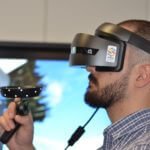
7 Benefits Of 3D Modelling & Product Rendering For eCommerce
You only need to take a cursory glance around the internet to notice that more and more eCommerce brands are using 3d design to complement and enhance their product listings. 3D modelling can be used to show off the more subtle aspects of any given product and highlight special features in a way that photographs are rarely capable of doing. In this article, we’re going to take a look at the benefits of 3D modelling and product rendering for eCommerce, while comparing both to traditional product photography.
You Don’t Need A Product To Photograph
It makes sense to start off with what is arguably the biggest benefit of 3D modelling and product rendering from an eCommerce point of view; you don’t actually need the product. Being able to render a model of a product in 3D allows websites to accurately portray and display an upcoming new product before having access to it. In fact, it can be used to market a product before it even exists.
This is in stark contrast to your typical product photo, which generally demands a product exist and be present before being able to depict it (We know! Shameful and lazy, is what it is). Product photography cannot be taken until whoever is photographing said product has it in front of them. This can be a huge barrier to effectively marketing a product that’s still in the developmental stage.
Even if a product does already exist, product photography still requires that a product be physically present to photograph, which can be an issue depending on where the product is made, how long it takes to ship, and whether it’s typically dropshipped to buyers directly from the manufacturer. With 3D rendering, all of these issues become irrelevant.
Flexible Lighting
As part of a wider branding and communications agency, we know that lighting is one of the most important things when it comes to product photography. Light, when used properly, helps to convey the shape and texture of a product, while also setting the tone and feel of the message brands are trying to portray to their customers.
One of the most convenient benefits of 3D modelling and product rendering is that you have full control over light. The direction and intensity of the lightsource can be easily manipulated, allowing 3D designers to quite literally shine a spotlight on whatever product characteristic they fancy.
Easy To Edit & Retouch
Product photography will always feature prominently on eCommerce websites, but not all product photos are equal. While a good shot can highlight a myriad of fantastic qualities, a bad one can make even the best product look drab and uninspiring. Even the ability to ‘Photoshop’ photos can only do so much to improve a poorly taken product photo.
3D product rendering, on the other hand, provides unlimited flexibility and all you need is the editable image file and the right software. Even if you didn’t have an editable file to work from, it’s possible to accurately recreate the image you want to edit and build your desired changes in.
Unlimited Customisation
The customisation potential for 3D rendered images is vast and looks a lot better than simply superimposing a logo or design onto a photo of a plain black shirt. Taking this as an example, a 3D rendered t-shirt could have any number of designs edited onto it and the final result could be viewed from practically any angle. This provides an infinitely better idea of what the end product will look like, making 3D modelling ideal for product designers and potential buyers alike. What’s more, you could quickly replicate these designs onto shirts of any colour, allowing you to produce mockups of entire ranges quickly and efficiently.
While we have used shirts as an example in this instance, the versatility of 3D modelling means this can be quickly and easily achieved for literally any kind of product. Just as it can be used to depict a shirt with a particular design in a range of colours, 3D design can also be used to depict a customer’s kitchens with different styles of decor or car interiors of various materials and colours. This customisation potential is quite literally limitless.
Lower Costs
Although 3D rendering sounds like it would cost a lot more, it’s actually a very cost-effective option. Carrying on the example above, to take product photos of a black shirt, a blue shirt, a green shirt, and a vermilion shirt, you’d need to have produced at least one of each and either ship them to the photographer or have the photographer come to you. Once the photos have been taken, they’d then need to be edited and it’s always possible that some reshoots will be required.
When it comes to producing 3D product renderings, however, you’re paying only for the time it takes to do the work. No product is needed to produce an image, which saves on shipping or travel costs, and production and editing are carried out as part of a consolidated process.
Condensed Time-Frames
We don’t want to labour the point, however, it’s worth pointing out that because products don’t need to be produced, shipped, photographed, etc., 3D rendering can take far less time to turn around. It’s certainly safe to say that the more products there are in need of image assets, the more time 3D modelling is capable of saving.
Images Can Be Turned Into Animations






